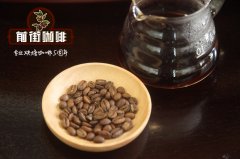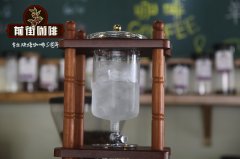How do you drink Brazilian coffee? The Brazilian way of handling coffee. Why doesn't Brazil use washing treatment?

Professional coffee knowledge exchange More coffee bean information Please pay attention to coffee workshop (Weixin Official Accounts cafe_style)
As the world's largest coffee producer, Brazil leads the world in coffee picking and processing technology, which is of course closely related to the mechanization level and intensive production of Brazil's coffee growing industry. Brazilian coffee is different from other countries in the way of picking, is to follow the principle of picking first, then screening; most of the coffee is picked mechanically; a few are stripped.
In the green bean processing technology, the most common processing methods for coffee are: sun, semi-sun, water washing, semi-water washing. Most Brazilian coffees are treated by natural sun or semi-washing, and the most common is natural sun ("natural sun" means that the coffee is allowed to absorb sunlight on the branches and is not picked until it is fully ripe).
Brazil is flat and monotonous, lacking micro-climate, most of which is tropical, with tropical rain forest climate in the north, tropical savanna climate in the middle and subtropical monsoon humid climate in some parts of the south. The average temperature is 25- 28 degrees, and the annual average temperature in the southern region is 16- 19 degrees. Low rainfall and long periods of sunshine are characteristics of the climate that make solarization more common in the region, represented by Brazil's two main producing states: Parana and Sao Paulo.
Brazil's coffee cultivation is distributed from large farms on the flat ground at an altitude of 850m--1200 m to small farms artificially harvested in mountainous areas. Depending on the climate and humidity conditions, the farm chooses sun, semi-sun or water treatment to present the best regional flavor.
The basic reference is that high humidity should be washed, low humidity should be sun or semi-sun. Because different processing methods can seriously affect whether the pod is overfermented and moldy during drying, coffee is treated in a way that relatively reduces mold growth.
Water washing, although also used by some coffee growers, is not the mainstream treatment method of choice; this is due to Brazil's large production, washing requires a large amount of water resources and wastewater treatment problems. Therefore, the later development of washing treatment is more used for very few farms to do small batch customization treatment.
Also, although Brazil is one of the countries with the richest fresh water resources in the world, its water resources are unevenly distributed, and many regions depend on natural draft. Especially in the east, where coffee cultivation is concentrated, severe droughts often occur, and scarce water resources limit coffee treatment options.
In short, each treatment is unique. Combined with the characteristics of the local natural environment, choose the appropriate treatment method, will present the unique flavor of the local production area. Also because of the different processing methods, we have to experience different regions, different production areas expressed by different characteristics of flavor, each unique.
For example, use 88℃ water, coarser grinding, 1:14 powder-to-water ratio, KONO filter cup, brewing time 1 minute and 50 seconds.
Flavor: Chocolate, Nutty, Low Acid
Important Notice :
前街咖啡 FrontStreet Coffee has moved to new addredd:
FrontStreet Coffee Address: 315,Donghua East Road,GuangZhou
Tel:020 38364473
- Prev

Guatemala Antigua Coffee How to Make_Antigua Coffee Bean Brewing Tutorial_Antigua Coffee How to Make
Antigua coffee bean cultivation history Since the Spanish introduced coffee to Guatemala after Guatemala's independence in 1838, they have been producing cheap coffee for the whole of Latin America by taking advantage of the industrious characteristics and low labor of the local Mayan people.
- Next

Antigua Flower God Coffee name Source _ Antigua Flower God Coffee beans how much is a pack
Professional coffee knowledge exchange more coffee bean information please follow the coffee workshop (Wechat official account cafe_style) Flower God-Antigua Coffee Antiqua Flora (Coffee Princess) Flower God-Antigua, the original La Flor del Caf means coffee flower, and many people call her the Coffee Goddess, because she shows a satin-like elegant and delicate style of origin: dangerous
Related
- Detailed explanation of Jadeite planting Land in Panamanian Jadeite Manor introduction to the grading system of Jadeite competitive bidding, Red bid, Green bid and Rose Summer
- Story of Coffee planting in Brenka region of Costa Rica Stonehenge Manor anaerobic heavy honey treatment of flavor mouth
- What's on the barrel of Blue Mountain Coffee beans?
- Can American coffee also pull flowers? How to use hot American style to pull out a good-looking pattern?
- Can you make a cold extract with coffee beans? What is the right proportion for cold-extracted coffee formula?
- Indonesian PWN Gold Mandrine Coffee Origin Features Flavor How to Chong? Mandolin coffee is American.
- A brief introduction to the flavor characteristics of Brazilian yellow bourbon coffee beans
- What is the effect of different water quality on the flavor of cold-extracted coffee? What kind of water is best for brewing coffee?
- Why do you think of Rose Summer whenever you mention Panamanian coffee?
- Introduction to the characteristics of authentic blue mountain coffee bean producing areas? What is the CIB Coffee Authority in Jamaica?

